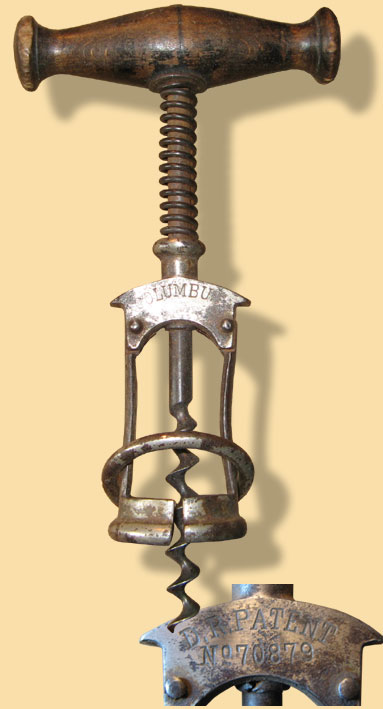 |
Type | Mechanical corkscrew | N° 432 |
Subcategory |
Spring | ||
|
Mark |
D.R. PATENT N° 70879 | N° patent : 70879 | |
Description |
The Columbus corkscrew
was patented in Germany by Edouard Becker de Solingen on March 7, 1893
(n° 70879).
But why Becker did it choose this name? Some bring a lyric note to this
baptism by comparing the ring with Christophe Colomb expedition who joined
together Europe and America symbolized together by the two mobile frames.
The true reason is perhaps commercial since we were in full commemoration
when Becker invented this model. There are three versions of this corkscrew
with :
The mobile and sliding ring
comes to close the cage during the use. To give off the cork, the ring
is raised thus releasing the cage which opens in two parts facilitating
the extraction of the cork. |
||
| Length | Overall length: 4.7 inches (12 centimeters) Handle: 3.34 inches (8,5 centimeters) Worm: 2.36 inches (6 centimeters) |
||
Weight |
3.77 ounces (107 grammes) | ||
Valuation |
53 USD
(41 €) - Valuation may 24, 2008 |
||
Bibliography |
The ultimate corkscrew book: page 64 |
||
Close this window